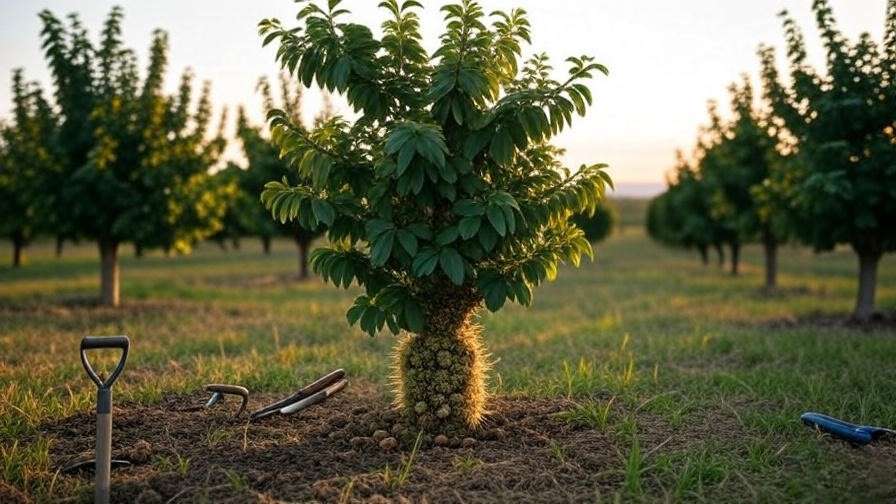Imagine unearthing a treasure beneath your own backyard tree—a fragrant, earthy truffle, coveted by chefs and food enthusiasts worldwide. Growing a truffle tree is not just a gardening project; it’s a journey into the fascinating world of mycology and sustainable agriculture. Whether you’re a plant enthusiast, a gourmet cook, or an eco-conscious gardener, cultivating a truffle tree offers a unique blend of challenge and reward. This comprehensive guide, crafted with insights from arborists and mycologists, will walk you through every step to successfully grow and care for your truffle tree, ensuring a thriving harvest. Ready to unlock the secrets of this gourmet delicacy? Let’s dig in! 🌱
What is a Truffle Tree? 🧑🌾
Definition and Basics
A truffle tree is a specially inoculated tree, typically an oak (Quercus robur) or hazelnut (Corylus avellana), that hosts truffle-producing fungi in a symbiotic relationship known as mycorrhiza. The tree’s roots partner with the fungal mycelium, creating an environment where truffles—underground mushrooms—can thrive. These fungi, such as Tuber melanosporum (black truffle) or Tuber aestivum (summer truffle), rely on the tree for nutrients while enhancing the tree’s ability to absorb water and minerals.
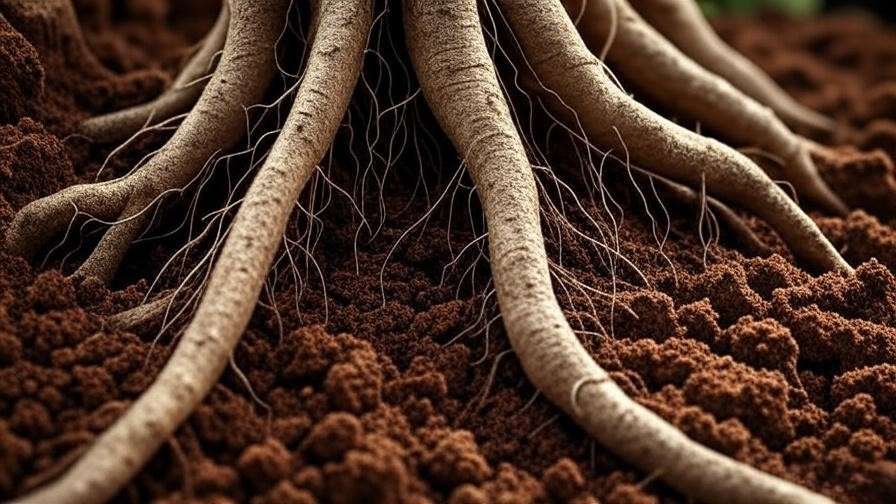
Why Grow a Truffle Tree? 🌍
Why invest time in a truffle tree? First, truffles are a high-value crop, fetching hundreds to thousands of dollars per pound, making them a lucrative endeavor for small-scale farmers or hobbyists. Second, truffle trees promote sustainable agriculture by fostering biodiversity and improving soil health. Finally, the personal satisfaction of harvesting your own gourmet truffles is unmatched—imagine serving homegrown truffles at your next dinner party! 🍽️
Expert Insight: “Growing a truffle tree is like nurturing a living partnership between tree and fungus. It’s a slow but deeply rewarding process,” says Dr. Maria Rossi, a mycologist with over 15 years of experience in truffle cultivation.
Choosing the Right Truffle Tree 🌱
Selecting the Best Tree Species
Choosing the right tree species is critical for truffle production. Oaks, such as English oak (Quercus robur) or holm oak (Quercus ilex), are popular for their longevity and compatibility with black truffles. Hazelnut trees (Corylus avellana) are favored for their faster growth, often producing truffles in 5–7 years compared to oaks’ 7–10 years. However, hazelnuts may yield smaller harvests over time. Consider your climate: oaks thrive in cooler regions, while hazelnuts adapt well to varied conditions.
Buying Inoculated Trees
Purchase inoculated truffle trees from reputable nurseries certified by organizations like the International Truffle Association. Look for suppliers that provide detailed documentation on the inoculation process and truffle species. Avoid non-certified vendors or trees with vague origins, as poor inoculation can lead to no truffle production. Check for healthy roots and a strong, disease-free seedling.
Tip: Use this checklist when buying:
- Certified inoculation with Tuber melanosporum or desired truffle species.
- Healthy, well-developed root system.
- Nursery reputation and customer reviews.
- Clear labeling of tree species and age.
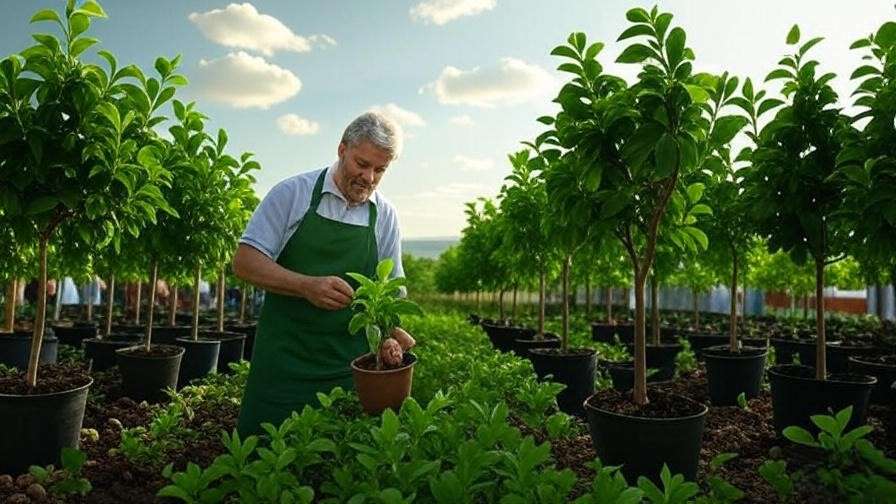
Preparing the Perfect Environment 🌞
Soil Requirements
Truffles demand specific soil conditions. Aim for a pH of 7.5–8.5, which is slightly alkaline. Test your soil using a home kit or lab analysis, and amend it with agricultural lime if too acidic. The soil should be well-draining, loamy, and rich in calcium but low in organic matter to avoid competing fungi. Avoid heavy clay or waterlogged soils, which can suffocate truffle mycelium.
Climate and Location
Truffle trees thrive in Mediterranean-like climates (USDA zones 6–9), with mild winters and warm, dry summers. They need partial sunlight—about 4–6 hours daily—balanced with shade to prevent stress. Protect young trees from frost with burlap wraps or windbreaks. Choose a site free from strong winds and extreme temperature fluctuations.
Site Preparation
Clear the planting area of weeds, grass, and competing plants, as these can rob nutrients from your truffle tree. Create a “truffle-friendly” microclimate by adding a 2–3 inch layer of organic mulch (e.g., wood chips) to regulate soil temperature and retain moisture. Space trees 10–15 feet apart to allow room for root expansion and truffle development.
Example: In Tuscany, Italy, a small truffle orchard succeeded by planting hazelnuts in well-drained, limed soil with drip irrigation, yielding truffles in just six years.
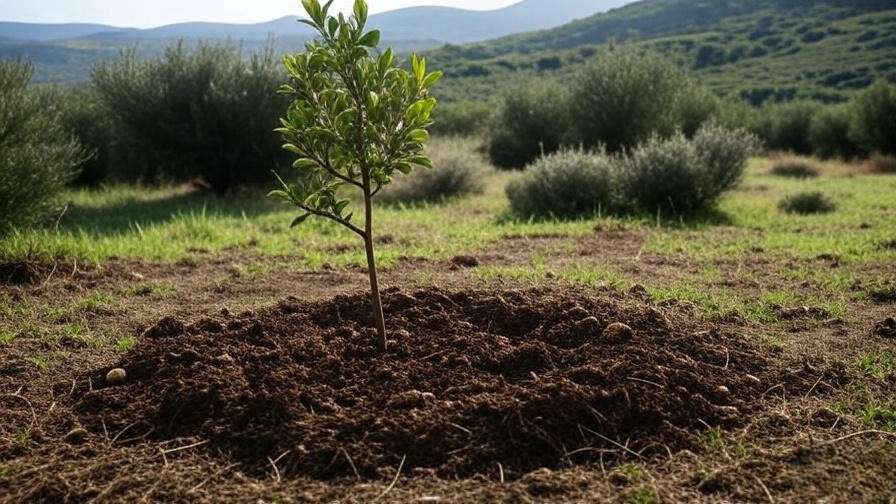
Planting Your Truffle Tree 🌳
Step-by-Step Planting Guide
Plant your truffle tree in late fall or early spring when the soil is workable but dormant. Follow these steps:
- Dig a hole twice the width of the root ball and as deep as the root system.
- Gently tease apart any tangled roots to encourage outward growth.
- Place the tree in the hole, ensuring the root collar is level with the soil surface.
- Backfill with native soil, tamping gently to remove air pockets.
- Water thoroughly to settle the soil.
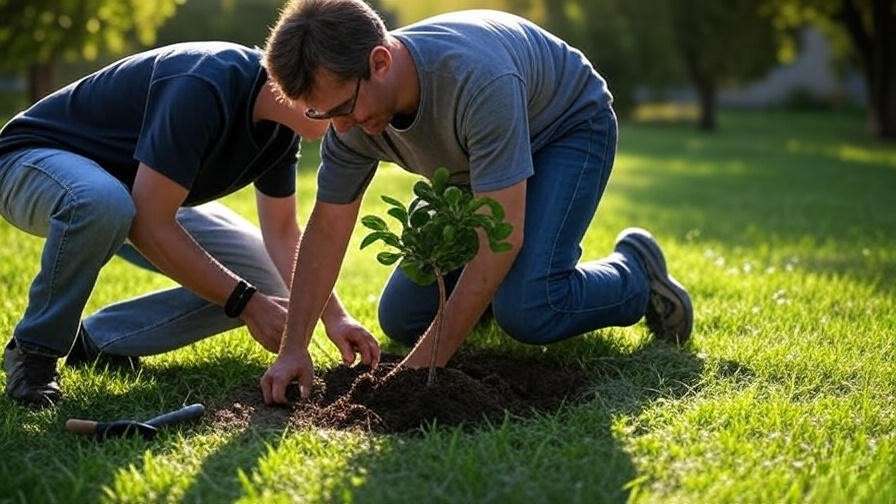
Post-Planting Care
Water your tree with 1–2 gallons weekly for the first month, then reduce to biweekly as roots establish. Apply a 2-inch layer of mulch around the base, keeping it 3 inches from the trunk to prevent rot. Avoid nitrogen-heavy fertilizers, as they can harm the truffle fungi. Monitor for signs of stress, such as wilting leaves, and adjust care accordingly.
Tip: Download our free planting checklist [link to PDF] for a step-by-step guide to ensure success.
Caring for Your Truffle Tree Over Time 🕰️
Watering and Irrigation 💧
Young truffle trees need consistent moisture but not waterlogging. Provide 1 inch of water weekly during dry periods, using drip irrigation for efficiency. Mature trees are more drought-tolerant but benefit from occasional deep watering during prolonged dry spells. Watch for yellowing leaves (overwatering) or drooping branches (underwatering) and adjust as needed.
Pruning and Maintenance ✂️
Prune truffle trees in late winter to remove dead or crossing branches, promoting airflow and light penetration. Keep cuts minimal to avoid stressing the mycorrhizal fungi. Regularly remove weeds and grass within a 3-foot radius of the tree base to reduce competition for nutrients.
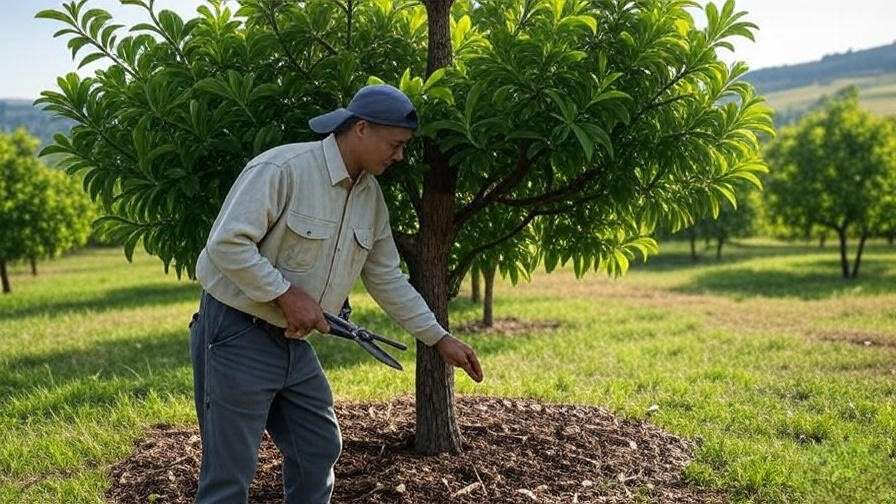
Pest and Disease Management 🐞
Common pests include root aphids and voles, which can damage roots and mycelium. Use organic controls like neem oil for aphids and physical barriers (e.g., wire mesh) for voles. Watch for fungal diseases like root rot, preventable by ensuring good drainage. Avoid chemical pesticides, as they can harm truffle fungi.
Expert Insight: “Maintaining a delicate balance between tree health and fungal vitality is key. Organic practices are non-negotiable,” advises Luca Bianchi, a truffle farmer from Umbria.
Encouraging Truffle Production 🍄
Understanding the Truffle Growth Cycle
Truffle production is a waiting game, but the payoff is worth it. Most truffle trees take 5–10 years to produce their first harvest, depending on the tree species, soil conditions, and truffle type. For example, hazelnut trees may yield truffles as early as five years, while oaks often require closer to a decade. The truffle growth cycle involves the mycelium spreading through the soil, forming underground fruiting bodies (truffles) in late fall to early winter. Key factors influencing yield include soil pH, moisture levels, and tree health. A telltale sign of truffle formation is the “brûlé,” a barren patch of ground around the tree where the mycelium suppresses competing plants.
Training a Truffle Dog 🐶
Harvesting truffles requires precision, and nothing beats a well-trained truffle dog for sniffing them out. Breeds like the Lagotto Romagnolo are ideal due to their keen sense of smell and gentle digging instincts. Other suitable breeds include Labrador Retrievers and Spaniels. Start training by introducing your dog to the scent of truffles using a small sample or truffle oil-soaked cotton. Reward them with treats for identifying the scent, gradually moving to outdoor searches in your orchard. Patience is key—training can take months but ensures efficient, non-invasive harvesting.
Tip: Join a local truffle dog training workshop or consult resources from organizations like the North American Truffle Growers Association.
Harvesting Truffles
Truffles are typically ready to harvest in late fall or winter, depending on the species (e.g., November–March for black truffles). Follow your dog’s lead to locate ripe truffles, which grow 2–10 inches underground near the tree’s roots. Use a small spade or trowel to carefully dig, avoiding damage to the tree’s roots or mycelium. After harvesting, store truffles in a breathable container (like a paper bag) in the refrigerator, wrapped in a cloth to absorb moisture, for up to two weeks. For longer storage, consider freezing or preserving in oil.
Example: Jane, a hobbyist in Oregon, harvested her first black truffles after seven years. She credits her success to consistent soil testing and a well-trained Lagotto Romagnolo named Bella, who located three truffles in her first season.
Troubleshooting Common Truffle Tree Problems ⚠️
Why Isn’t My Tree Producing Truffles?
If your truffle tree isn’t yielding after several years, several factors could be at play:
- Poor Inoculation: The tree may not have been properly inoculated with viable truffle mycelium. Always verify certification from the supplier.
- Suboptimal Soil: Test pH and nutrient levels; adjust with lime if too acidic.
- Young Tree: Trees under 5–7 years may not yet be mature enough to produce.
- Environmental Stress: Drought, overwatering, or extreme temperatures can disrupt fungal growth.
To diagnose, consult a mycologist or send soil samples to a lab specializing in truffle cultivation.
Environmental Challenges
Unexpected weather can challenge truffle trees. Prolonged drought may require supplemental irrigation, while heavy rains can lead to root rot. Install drainage systems in flood-prone areas and use mulch to stabilize soil moisture. In colder climates outside ideal zones, protect trees with frost blankets during winter. Monitor weather patterns and adjust care practices seasonally.
Tree Health Issues
Yellowing leaves or stunted growth may indicate nutrient deficiencies or root damage. Conduct a soil test to check for imbalances and amend with calcium or magnesium as needed. If root damage is suspected (e.g., from pests or over-digging), consult an arborist. Regular inspections can catch issues early, preserving both tree and truffle health.
Tip: Use this troubleshooting table to identify and resolve issues:
| Problem | Possible Cause | Solution |
|---|---|---|
| No truffles | Poor inoculation | Verify supplier certification; re-inoculate if needed |
| Yellow leaves | Nutrient deficiency | Test soil; add appropriate amendments |
| Slow growth | Overwatering | Improve drainage; reduce irrigation |
Scaling Up: From One Tree to a Truffle Orchard 🌲🌲
Planning a Small Truffle Orchard
For those ready to expand, a truffle orchard can be a rewarding investment. Plan for 50–100 trees per acre, spaced 10–15 feet apart to allow ample room for root systems. Choose a mix of tree species (e.g., oaks and hazelnuts) to diversify harvest timelines. Budget for initial costs like trees ($20–$50 each), soil amendments, and irrigation systems. A drip irrigation setup is ideal for consistent moisture without waterlogging.
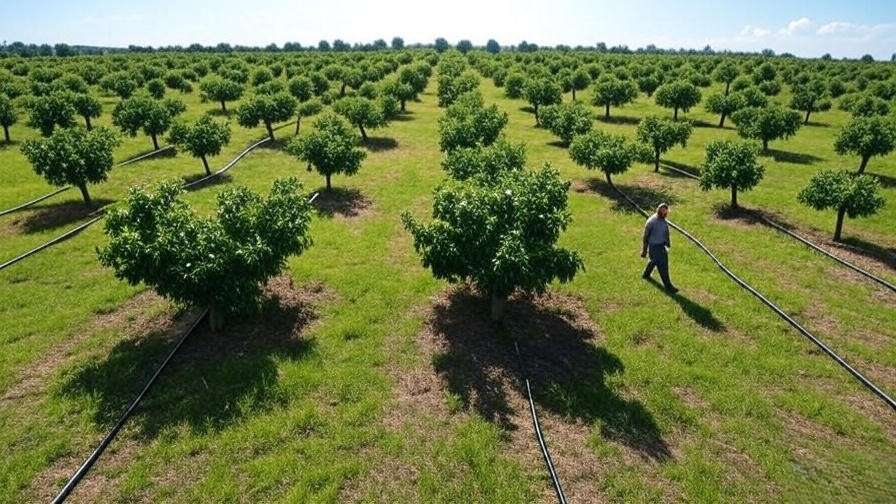
Legal and Commercial Considerations
Before scaling, check local regulations for agricultural permits, especially if selling truffles commercially. Some regions require environmental assessments for large orchards. Explore markets like high-end restaurants, farmers’ markets, or gourmet food suppliers. Joining a truffle growers’ association, such as the European Truffle Federation, provides networking, resources, and market insights.
Expert Insight: “Scaling to an orchard requires patience and planning, but the community of truffle growers is incredibly supportive,” says Paolo Conti, a truffle farmer with a 10-acre orchard in Piedmont, Italy.
FAQs About Truffle Tree Care ❓
- How long does it take for a truffle tree to produce truffles?
Typically 5–10 years, depending on tree species and conditions. - Can I grow a truffle tree in a pot or container?
It’s possible but not ideal, as truffle fungi need expansive root systems. Use large containers (50+ gallons) with well-draining, alkaline soil. - What’s the best truffle species for beginners?
Tuber melanosporum (black truffle) is hardy and widely cultivated, making it beginner-friendly. - How do I know if my tree is properly inoculated?
Request documentation from the nursery and look for healthy root systems with visible mycorrhizal growth. - Are truffle trees safe for pets or livestock?
Yes, but protect trees from digging animals with barriers. - Can I grow truffle trees in colder climates?
In colder zones (below USDA 6), use frost protection and select hardy species like hazelnut.
Conclusion: Your Journey to Truffle Success 🚀
Growing a truffle tree is a blend of science, patience, and passion. From selecting the right inoculated seedling to nurturing the delicate mycorrhizal relationship, every step brings you closer to harvesting your own gourmet truffles. Start small, stay consistent, and embrace the learning curve. Whether you’re dreaming of a single tree or a sprawling orchard, this guide equips you with the tools for success. Share your truffle tree journey in the comments below or join our plant care community for more tips! 🌿 Ready to explore more? Check out our articles on soil testing or organic pest control.

